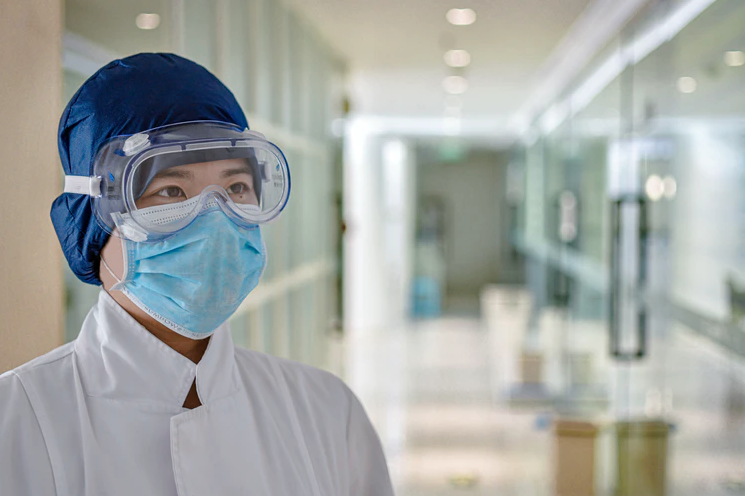How To Wear A Face Mask With Glasses
22 July 2020
There are numerous questions, concerns and problems with wearing a mask. Especially if you have glasses you may find that wearing a mask steams up your glasses. How can you get them to sit more comfortable on your face? Looking at various studies and taking inspiration from frontline key workers who wear masks as part of their jobs, we can learn the best way to wear a face mask. When we wear a mask, the warm breath can escape through the top edges, along the tops of our cheeks. When the hot air lands on cooler lenses, it creates condensation on the surface and a foggy film. Cold weather makes the problem worse. Most of the breath should be going through the mask. If you feel the air going in or out around the mask, tighten the ties. Medical masks have built-in, bendable metal strips that you can mould to the bridge of your nose. Adjust the ties or the ear loops so the mask fits snugly against your face. If the air is going out the top, you don’t have your mask on correctly. Another option is to use white athletic or medical tape or even an adhesive bandage to seal the top of the mask around the bridge of your nose. This is something a lot of medical students learn early on when they’re using eye protection goggles. Don’t use nonporous household tapes like packing tape which could irritate skin. Taping is a lot of work for a short trip outside but might be warranted if you’re caring for a sick person. Try soapy water. Dr. Sheraz Malik, senior clinical fellow at Manchester University Hospitals NHS Foundation Trust and the author of the report, published a paper in 2011 showing that washing your glasses with soapy water and letting them air dry can help. Soap acts as a surfactant — which stands for surface active agent — and the soapy water leaves behind a thin film that stops the water molecules from forming droplets that lead to fog. He noted that operating rooms tend to be kept at low temperatures, making the “misting” problem a real issue for surgeons who wear spectacles. “I haven’t timed it, but the technique reliably works for more than a half-hour when operating,” Dr. Malik said. “Obviously if the face mask is tightly secured on the nose, there is less escape of the moisture toward the glasses and the technique works for longer.” Beware of commercial anti-fog products. Many eyeglasses are now treated with special protective coatings that resist glare and smudges. The problem is that the coatings also may resist anti-fog treatments, including home remedies like soapy water and commercial treatments. Do check before applying your own remedy. Popular suggestions for treating lenses this way include baby shampoo, toothpaste and shaving cream. The main challenge of treating your lenses is adding enough of the substance to stop the fog, but not so much that the coating itself blurs the lens. If your glasses are not treated then you can buy commercial anti-fogging wipes and sprays but you may save yourself a lot of effort with your own surfactant.
Steaming / Fogging Up Glasses
Wearing In Comfort
Could Cleaning My Glasses Help?